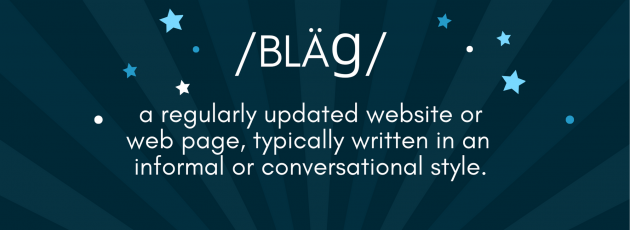by Vikki Angelo, AIC, ITP, CPIW, CLP, CCA, CLC
Region IV Vice President
RVPs are being asked to write a blog article rather than an introduction article for the Connections newsletter. I hate to admit it, but I have never written a blog. Since this is my first attempt, I wanted to be sure I was doing it correctly, so I started researching how to write a blog. Then it came to me – I am probably not the only one to have never written a blog. So why not write a blog on how to write a blog?
So here goes – the steps to write a blog.
Step One: Topic
When selecting a topic, consider your goal, your audience, and what you want to offer your readers. For example, my topic for this blog is:
- My goal is to educate myself, as well as others, on how to write a blog
- My target audience – fellow IAIP members
- What I want to offer – possibly humorous, simple directions on how to write a blog
Step Two: Do your research.
For this blog I googled “how to write a blog”, used information from several different sources, and watched a few videos on LinkedIn Learning.
Step Three: Create an outline.
Here is a simple pattern to follow when creating your outline:
- Introduction
- Body content
- Conclusion
Step Four: Write your blog.
Once you have developed your ideas, start writing. Write freely, ignoring the impulse to self-edit as you go along. This step proved very difficult for me as I am constantly self-editing – reading, re-reading, erasing, stating, re-stating, erasing; yada, yada, yada.
Step Five: Use Visual Elements
There are many types of visuals to use to make your blog visually appealing.
Images – the most common visual. Be sure to avoid copyright issues.

Infographics – charts, statistics, maps, and timelines.

Videos – you can create your own or use sites such as YouTube. Be sure to avoid copyright issues.

GIFs – GIF stands for graphics interchange format. GIFs are generally animations.

Screenshots – a picture (or snip) taken of your screen.

Step Six: Edit Grammar and Content
Now, you can self-edit. This step is extremely critical because grammatical errors or typos could cause your audience to stop reading. They reduce the author’s credibility. We wouldn’t want that, would we? Check and double check your grammar and spelling to ensure you have no airrors. Yes, I know I misspelled errors. I was just checking to see if you were paying attention. Did I make my point?
Step Seven: Publish
There are many different blog sites to publish your blog: WordPress, web.com, and webador are examples. This blog will be published on the IAIP blog Today’s Insurance Professionals.
I hope this blog has been somewhat entertaining but even more so a benefit to those of you who have not written blogs. One additional piece of information I found was that bloggers sometimes need to have a “thick skin”. There will always be critics, so pull up your “big girl” or “big boy” pants and write that blog. Challenge your skill set and learn something new.
Vikki Angelo AIC, ITP, CPIW, CLP, CCA, CLC has 42 years in the insurance industry, primarily in a leadership role in both claims and training. She is a 27-year member of IAIP who has served in many leadership roles.
